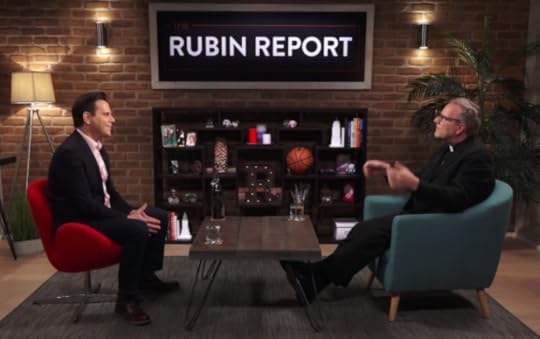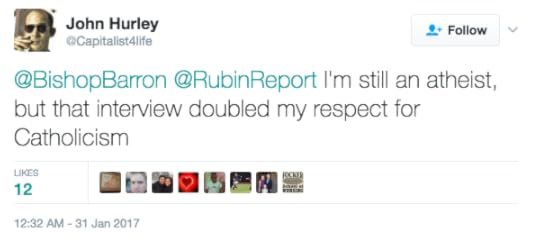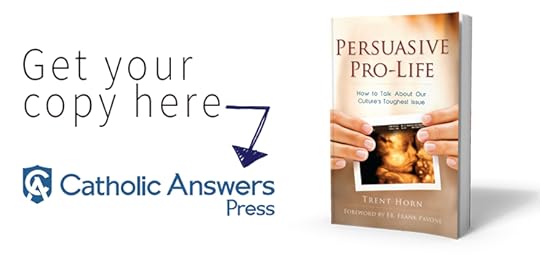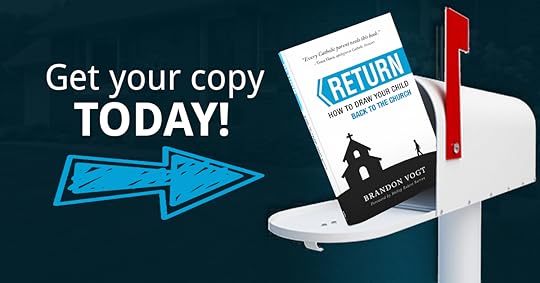Brandon Vogt's Blog, page 5
February 28, 2017
Learning from a Saint who Spread the Wisdom of the Desert

Today we continue our regular series called “Learning from the Saints.” Our guide is expert Bert Ghezzi, a dear friend of mine and the author of numerous books including Voices of the Saints, Saints at Heart, and Discover Christ: Developing a Personal Relationship with Jesus.
His more recent books are The Power of Daily Mass and The Heart of Catholicism. You can learn more about Bert and his work at BertGhezzi.com.
Today, Bert profiles St. John Cassian, the desert hero who has the unique feast day of February 29 (though his feast is celebrated on February 28 during non leap years.)
Around 380, John Cassian migrated from Romania to Bethlehem, where he embraced the monastic life. After 385 he wandered the Egyptian desert, the heart of Eastern monasticism. He visited abbots at monasteries and hermits in their caves, absorbing their teachings about the Christian life.
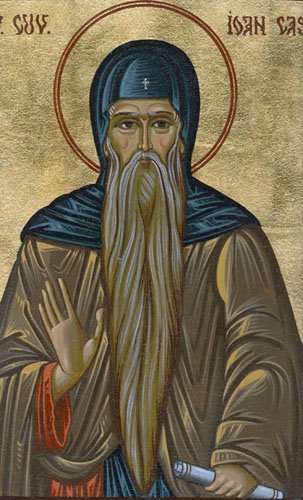 400 found him on the staff of *St. John Chrysostom in Constantinople. When Chrysostom was unfairly deposed and exiled, Cassian was among his defenders who traveled to Rome to plead his case before the pope. At that time he was ordained a priest.
400 found him on the staff of *St. John Chrysostom in Constantinople. When Chrysostom was unfairly deposed and exiled, Cassian was among his defenders who traveled to Rome to plead his case before the pope. At that time he was ordained a priest.
John Cassian never returned to the East. In 415, he founded two monasteries at Marseilles, one for men and another for women. His foundations were cenobia, community schools that formed candidates for a life of solitude. To instruct his monks and nuns, Cassian wrote two significant books. The Institutes described the Eastern pattern of monastic life and the virtues required of monks. The Conferences presented the wisdom of the Egyptian desert in the form of discourses by famous abbots. In the following sample we hear “Abbot Isaac” on the practice of the presence of God:
“‘To keep the thought of God always in your mind you must cling totally to this formula for piety: “Come to my help, O God. Lord, hurry to my rescue” (see Ps 70:2).
“‘With good reason this verse has been chosen from the whole of Scripture as a device. It bears all the feelings that human nature can experience. It can be adapted to every condition and deployed against every temptation. It carries a cry to God in the face of every danger. It piously confesses humility. It conveys our sense of frailty, our assurance of being heard, our confidence in help that is always and everywhere present. Someone forever calling out to his protector is very sure of his nearness.
“‘This short verse is an indomitable wall for all those struggling against the onslaught of demons. Whatever the disgust, the anguish, or the gloom in our thoughts, it keeps us from despairing of our salvation since it reveals to us the One to whom we call, the One who sees our struggles and who is never far from those who pray to him.
“‘If things go well for us in spirit, this verse is a warning. We must not get puffed up at being in a good condition that we cannot retain without the protection of God for whose continuous and speedy help it prays. This little verse, I am saying, proves to be necessary and useful to each one of us in all circumstances.’”
Cassian’s Institutes and Conferences interpreted Egyptian monasticism for the Western church. Benedict advocated that monks read Cassian second only to the Bible and *Augustine and Gregory also recommended his works. Through their influence Cassian shaped the practice of monasticism in the West through the middle ages and even into the present.
The Eastern church recognizes Cassian as a saint. But the Western church did not canonize him probably because he was regarded as the leading proponent of a teaching called Semi-Pelagianism. In a controversy over salvation, he challenged Augustine’s view of predestination and minimized the role of grace in the first steps of the Christian life. But historians now say that Cassian had adopted an “anti-Augustine” position rather than a heretical one. The saint died at Marseilles around 433.
Today lay people cannot practice the presence of God with the constancy that Cassian demanded. But we can frequently remind ourselves of God’s nearness and draw on his grace by praying “Come to my help, O God. Lord, hurry to my rescue.”
Read more from Bert at his website www.BertGhezzi.com, or check out his many books on Amazon.
The post Learning from a Saint who Spread the Wisdom of the Desert appeared first on Brandon Vogt.





February 3, 2017
24 Atheists Impressed by Bishop Barron’s YouTube Interview
A few months ago, a man named Dave Rubin reached out to us at Word on Fire to ask if Bishop Barron would be open to an interview. (Apparently lots of Dave’s Twitter followers suggested the idea.)
To be honest, we didn’t know much about Dave at the time. But after some Googling, we discovered he’s a well-known comedian and host of the super popular “Rubin Report”, a show that airs directly through YouTube. “The Rubin Report” has over 350,000 subscribers and 100 million views. It’s one of the most popular YouTube channels in the world.
Dave mostly shares cultural commentary and interviews with leading thinkers, scientists, politicians, and celebrities. He’s a fair and balanced host, but from the videos and comments, it’s clear his audience skews very secular and fairly liberal.
Dave is an interesting guy. One website describes him as a “rising media star” and “the voice of liberals who were mugged by progressives.” It says he’s “a 39-year-old pro-choice, pro-pot, recently gay-married atheist with a strong allergy to organized religion.”
In other words, the anti-Bishop Barron.
We wondered how Dave and the Bishop would do together since they’re almost polar opposites. But after sampling some of Dave’s videos, we noted that even when Dave disagreed with his guests, he was still fair and engaging. He’s a big champion of free speech and welcomes all sorts of people on his show. Instead of hammering them or tossing “gotcha” questions, Dave sincerely tries to understand the guest’s point of view, giving them free rein to articulate it.
So, with all that in mind, Bishop Barron decided to do the interview. He figured while some Catholics might wonder why a bishop would appear on such a show, the net effect would be overwhelmingly positive. His main hope was that it would put the Catholic Faith on the radar of thousands of people—especially young people—who would otherwise never consider God or religion.
And wow, did that happen!
Dave recently posted the full interview on YouTube (in two parts, watch them below) and immediately the comment boxes and social media lit up as hundreds of atheists, agnostics, and non-Catholics expressed admiration and interest.
(The videos already have over 100,000 combined views.)
Honestly, I’ve never seen anything like it. I run the #4 most popular blog for atheists and I’ve chatted with hundreds of skeptics over the years.
Yet I’ve never seen a such a stream of genuine respect and appreciation for a Catholic cleric.
My job at Word on Fire involves keeping tabs on the different reactions, so I picked out some of my favorites to share below. I’m pretty sure all of them are from atheists.
(Neither Bishop Barron nor anyone at Word on Fire asked me to share these comments; I’m doing it just because I’m so excited by them. Also, there were many, many more encouraging comments. This was just a sampling.)
I encourage you to watch both parts of the interview. Bishop Barron did such a marvelous job. He was smart and eloquent, even when Dave pushed the discussion toward hot-button issues.
In fact, I think the interview offers a sort of masterclass in apologetics and evangelization. The answers weren’t perfect, and like any guest, I’m sure Bishop would love to go back and rephrase one or two of them (always the case with any unscripted, wide-ranging, hour-long interview.) But his responses are the best I’ve seen on several prickly issues. They’re sharp, clear, funny, and winsome, and confirm Bishop Barron’s intuitive grasp of expressing the Faith in the right way, with the right words, with the right sensitivities.
So watch, learn, and enjoy!
NOTE: All these comments were either on the original YouTube videos or in response to them on Twitter.

The post 24 Atheists Impressed by Bishop Barron’s YouTube Interview appeared first on Brandon Vogt.





February 1, 2017
Fulton Sheen on Why We Need More Intolerance
[image error]
America was born out of tolerance. Our country emerged from a religious struggle and was founded on freedom.
But in recent years, tolerance has become not just a principle but a supreme virtue. Universities breathlessly promote tolerance, even above truth. Companies emphasize their diverse and tolerant culture.
Today, a man might be imprudent, intemperate, and faithless. But he’ll remain respectable so long as he’s tolerant.
It’s true that tolerance is a good thing, in most cases. We should tolerate differing tastes, differing beliefs, even differing religions.
But tolerance is not an absolute good, because it always demands specificity:
Tolerance of what?
Should we tolerate evil? Should we tolerate logical contradictions? Should we tolerate intolerance?
Tolerance demands conditions, something that the great Catholic preacher Fulton Sheen knew a century ago. The following piece is an excerpt from his 1931 book, Old Errors and New Labels, and is provocatively titled “A Plea for Intolerance.”
I’m sure his words were timely then, but perhaps moreso today. This line sums up his argument:
“Tolerance applies only to persons, but never to truth. Intolerance applies only to truth, but never to persons. Tolerance applies to the erring; intolerance to the error.”
What a crucial point! The greatest barrier to dialogue is our failure to separate people from their ideas. When that happens, people become afraid to challenge bad ideas because they feel like they’re demeaning the person who holds them. But people are not their beliefs—they have beliefs, but they are not identical with their beliefs. That’s a vital distinction, which Sheen helps us see
Read the whole essay!
(Unfortunately, Sheen’s book is out of print but you can sometimes find used copies on Amazon.)
“A Plea for Intolerance”
Fulton J. Sheen
America, it is said, is suffering from intolerance. It is not. It is suffering from tolerance: tolerance of right and wrong, truth and error, virtue and evil, Christ and chaos. Our country is not nearly so much overrun with the bigoted as it is overrun with the broadminded. The man who can make up his mind in an orderly way, as a man might make up his bed, is called a bigot; but a man who cannot make up his mind, any more than he can make up for lost time, is called tolerant and broadminded. A bigoted man is one who refuses to accept a reason for anything; a broadminded man is one who will accept anything for a reason—providing it is not a good reason. It is true that there is a demand for precision, exactness, and definiteness, but it is only for precision in scientific measurement, not in logic. The breakdown that has produced this unnatural broadmindedness is mental, not moral. The evidence for this statement is threefold: the tendency to settle issues not by arguments but by words, the unqualified willingness to accept the authority of anyone on the subject of religion, and, lastly, the love of novelty….
Religion is not an open question, like the League of Nations, while science is a closed question, like the addition table. Religion has its principles, natural and revealed, which are more exacting in their logic than mathematics. But the false notion of tolerance has obscured this fact from the eyes of many who are as intolerant about the smallest details of life as they are tolerant about their relations to God. In the ordinary affairs of life, these same people would never summon a Christian Science practitioner to fix a broken windowpane; they would never call in an optician because they had broken the eye of a needle; they would never call in a florist because they hurt the palm of their hand, nor go to a carpenter to take care of their nails. They would never call in a Collector of Internal Revenue to extract the nickel swallowed by the baby. They would refuse to listen to a Kiwanis booster discussing the authenticity of a painting, or to a tree‐surgeon settling a moot question of law. And yet for the all‐important subject of religion, on which our eternal destinies hinge, on the all‐important question of the relations of man to his environment and to his God, they are willing to listen to anyone who calls himself a prophet. And so our journals are filled with articles for these “broadminded” people, in which everyone from Jack Dempsey to the chief cook of the Ritz Carlton tells about his idea of God and his view of religion. These same individuals, who would become exasperated if their child played with a wrongly colored lollipop, would not become the least bit worried if the child grew up without ever having heard the name of God….
The nature of certain things is fixed, and none more so than the nature of truth. Truth maybe contradicted a thousand times, but that only proves that it is strong enough to survive a thousand assaults. But for any one to say, ʺSome say this, some say that, therefore there is no truth,ʺ is about as logical as it would have been for Columbus, who heard some say, ʺThe earth is round,ʺ and other say, ʺThe earth is flat,ʺ to conclude: ʺTherefore there is no earth at allʺ….
The giggling giddiness of novelty, the sentimental restlessness of a mind unhinged, and the unnatural fear of a good dose of hard thinking, all conjoin to produce a group of sophomoric latitudinarians who think there is no difference between God as Cause and God as a ʺmental projectionʺ; who equate Christ and Buddha, St. Paul and John Dewey, and then enlarge their broad‐mindedness into a sweeping synthesis that says not only that one Christian sect is just as good as another, but even that one world‐religion is just as good as another. The great god ʺProgressʺ is then enthroned on the altars of fashion, and as the hectic worshipers are asked, ʺProgress towards what?ʺ The tolerant answer comes back, ʺMore progress.ʺ All the while sane men are wondering how there can be progress without direction and how there can be direction without a fixed point. And because they speak of a ʺfixed point,ʺ they are said to be behind the times, when really they are beyond the times mentally and spiritually.
In the face of this false broad‐mindedness, what the world needs is intolerance. The mass of people have kept up hard and fast distinctions between dollars and cents, battleships and cruisers, ʺYou owe meʺ and ʺI owe you,ʺ but they seem to have lost entirely the faculty of distinguishing between the good and the bad, the right and the wrong. The best indication of this is the frequent misuse of the terms ʺtoleranceʺ and ʺintolerance.ʺ There are some minds that believe that intolerance is always wrong, because they make ʺintoleranceʺ mean hate, narrow‐ mindedness, and bigotry. These same minds believe that tolerance is always right because, for them, it means charity, broad‐mindedness, American good nature.
What is tolerance? Tolerance is an attitude of reasoned patience towards evil, and a forbearance that restrains us from showing anger or inflicting punishment. But what is more important than the definition is the field of its application. The important point here is this: Tolerance applies only to persons, but never to truth. Intolerance applies only to truth, but never to persons. Tolerance applies to the erring; intolerance to the error….
Tolerance does not apply to truth or principles. About these things we must be intolerant, and for this kind of intolerance, so much needed to rouse us from sentimental gush, I make a plea. Intolerance of this kind is the foundation of all stability. The government must be intolerant about malicious propaganda, and during the World War it made an index of forbidden books to defend national stability, as the Church, who is in constant warfare with error, made her index of forbidden books to defend the permanency of Christʹs life in the souls of men. The government during the war was intolerant about the national heretics who refused to accept her principles concerning the necessity of democratic institutions, and took physical means to enforce such principles. The soldiers who went to war were intolerant about the principles they were fighting for, in the same way that a gardener must be intolerant about the weeds that grow in his garden. The Supreme Court of the United States is intolerant about any private interpretation of the first principle of the Constitution that every man is entitled to life, liberty, and the pursuit of happiness, and the particular citizen who would interpret ʺlibertyʺ in even such a small way as meaning the privilege to ʺgoʺ on a red traffic‐light, would find himself very soon in a cell where there were no lights, not even the yellow — the color of the timid souls who know not whether to stop or go. Architects are as intolerant about sand as foundations for skyscrapers as doctors are intolerant about germs in their laboratories, and as all of us are intolerant of a particularly broad‐minded, ʺtolerant,ʺ and good‐natured grocer who, in making our bills, adds seven and ten to make twenty.
Now, if it is right — and it is right — for governments to be intolerant about the principles of government, and the bridge builder to be intolerant about the laws of stress and strain, and the physicist to be intolerant about the principles of gravitation, why should it not be the right of Christ, the right of His Church, and the right of thinking men to be intolerant about the truths of Christ, the doctrines of the Church, and the principles of reason? Can the truths of God be less exacting than the truths of mathematics? Can the laws of the mind be less binding than the laws of science, which are known only through the laws of the mind? Shall man, gifted with natural truth, who refuses to look with an equally tolerant eye on the mathematician who says two and two make five and the one who says two and two make four, be called a wise man, and shall God, Who refuses to look with an equally tolerant eye on all religions, be denied the name of ʺWisdom,ʺ and be called an ʺintolerantʺ God?…
Why, then, sneer at dogmas as intolerant? On all sides we hear it said today, ʺThe modern world wants a religion without dogmas,ʺ which betrays how little thinking goes with that label, for he who says he wants a religion without dogmas is stating a dogma, and a dogma that is harder to justify than many dogmas of faith. A dogma is a true thought, and a religion without dogmas is a religion without thought, or a back without a backbone. All sciences have dogmas. ʺWashington is the capital of the United Statesʺ is a dogma of geography. ʺWater is composed of two atoms of hydrogen and one of oxygenʺ is a dogma of chemistry. Should we be broad‐minded and say that Washington is a sea in Switzerland? Should we be broad‐minded and say that H2O is a symbol for sulfuric acid? …
But it is anything but progress to act like mice and eat the foundations of the very roof over our heads. Intolerance about principles is the foundation of growth, and the mathematician who would deride a square for always having four sides, and in the name of progress would encourage it to throw away even only one of its sides, would soon discover that he had lost all his squares. So too with the dogmas of the Church, of science, and of reason; they are like bricks, solid things with which a man can build, not like straw, which is ʺreligious experience,ʺ fit only for burning.
A dogma, then, is the necessary consequence of the intolerance of first principles, and that science or that church which has the greatest amount of dogmas is the science or the church that has been doing the most thinking. The Catholic Church, the schoolmaster for twenty centuries, has been doing a tremendous amount of solid, hard thinking and hence has built up dogmas as a man might build a house of brick but grounded on a rock. She has seen the centuries with their passing enthusiasms and momentary loyalties pass before her, making the same mistakes, cultivating the same poses, falling into the same mental snares, so that she has become very patient and kind to the erring pupils, but very intolerant and severe concerning the false. She has been and she will always be intolerant so far as the rights of God are concerned, for heresy, error, untruth, affect not personal matters on which she may yield, but a Divine Right in which there is no yielding. Meek she is to the erring, but violent to the error. The truth is divine; the heretic is human. Due reparation made, she will admit the heretic back into the treasury of her souls, but never the heresy into the treasury of her wisdom. Right is right if nobody is right, and wrong is wrong if everybody is wrong. And in this day and age we need, as Mr. [G. K.] Chesterton tells us, ʺnot a Church that is right when the world is right, but a Church that is right when the world is wrong.ʺ
The attitude of the Church in relation to the modern world on this important question may be brought home by the story of the two women in the courtroom of Solomon [see 3 Kings 3:16-28]. Both of them claimed a child. The lawful mother insisted on having the whole child or nothing, for a child is like truth — it cannot be divided without ruin. The unlawful mother, on the contrary, agreed to compromise. She was willing to divide the babe, and the babe would have died of broad‐mindedness.
Source: Fulton J. Sheen, Old Errors and New Labels (New York, NY: The Century Company, 1931)
(HT: Novus Ordo)
The post Fulton Sheen on Why We Need More Intolerance appeared first on Brandon Vogt.
 [image error]
[image error]



January 24, 2017
Have Someone Read You Every C.S. Lewis Essay for Less Than $20
If you’re a fan of C.S. Lewis, here’s some great news, which I just learned about via Tony Reinke’s blog.
Most people know C.S. Lewis through his Narnian chronicles or his theology books, such as Mere Christianity, The Screwtape Letters, or The Great Divorce. But beyond his stories and books, we shouldn’t forget his essays.
Lewis was one of the most clear and insightful essayists of the twentieth century. You can find his essays scattered within several collections, but until recently there wasn’t a single, comprehensive volume which pulled them together.
That changed in the year 2000, when Lesley Walmsley published C. S. Lewis: Essay Collection and Other Short Pieces. The book spans over 1,000 pages and features 137 essays, letters, and short stories.
It’s a goldmine for C.S. Lewis fans, however it’s a tough one to acquire. The collection was published in London and few copies were printed, so copies are scarce in the United States. Most used copies are at least $150 on Amazon.
But here’s the great news!
You can now get the entire collection in a $35 audiobook through Audible . . . $19.95 audiobook through Audible. The 39 hours of audio is performed by the late British actor, Ralph Cosham (1936–2014).
C.S. Lewis Essay Collection Audiobook (Amazon)
Here’s the full track list:
Essays
1) The Grand Miracle
2) Is Theology Poetry?
3) The Funeral of a Great Myth
4) God In the Dark
5) What Are We to Make of Jesus Christ?
6) The World’s Last Night
7) Is Theism Important?
8) The Seeing Eye
9) Must Our Image of God Go?
10) Christianity and Culture
11) Evil and God
12) The Weight of Glory
13) Miracles
14) Dogma and the Universe
15) The Horrid Red Things
16) Religion: Reality or Substitute?
17) Myth Became Fact
18) Religion and Science
19) Christian Apologetics
20) Work and Prayer
21) Religion Without Dogma?
22) The Decline of Religion
23) Unforgiveness
24) The Pains of Animals
25) Petitionary Prayer: A Problem Without an Answer
26) On Obstinacy in Belief
27) What Christmas Means to Me
28) The Psalms
29) Religion and Rocketry
30) The Efficacy of Prayer
31) Fern Seed and Elephants
32) The Language of Religion
33) Transposition
34) Why I am Not a Pacifist
35) Dangers of National Repentance
36) Two Ways With the Self
37) Meditation on the Third Commandment
38) On Ethics
39) Three Kinds of Men
40) Answers to Questions on Christianity
41) The Laws of Nature
42) Membership
43) The Sermon and the Lunch
44) Scraps
45) After Priggery – What?
46) Man or Rabbit?
47) The Trouble With X
48) On Living in an Atomic Age
49) Lillies that Fester
50) Good Work and Good Works
51) A Slip of the Tongue
52) We Have No Right to Happiness
53) Christian Reunion: An Anglican Speaks to Roman Catholics
54) Priestesses in the Church?
55) On Church Music
56) Christianity and Literature
57) High and Low Brows
58) Is English Doomed?
59) On the Reading of Old Books
60) The Parthenon and the Optative
61) The Death of Words
62) On Science Fiction
63) Miserable Offenders
64) Different Tastes in Literature
65) Modern Translations of the Bible
66) On Juvenile Tastes
67) Sex in Literature
68) The Hobbit
69) Period Criticism
70) On Stories
71) On Three Ways of Writing for Children
72) Prudery and Philology
73) Tolkein’s “The Lord of the Rings”
74) Sometimes Fairy Stories May Say Best What’s to Be Said
75) It All Began With a Picture
76) Unreal Estates
77) On Criticism
78) Cross Examination
79) A Tribute to E.R. Eddison
80) The Mythopoeic Gift of Rider Haggard
81) George Orwell
82) A Panegyric for Dorothy L. Sayers
83) The Novels of Charles Williams
84) Learning in War-Time
85) Bulverism (or, The Foundation of 20th Century Thought)
86) The Founding of the Oxford Socratic Club
87) My First School
88) Democratic Education
89) Blimpophobia
90) Private Bates
91) Meditation in a Tool Shed
92) On the Transmission of Christianity
93) Modern Man and His Categories of Thought
94) Historicism
95) The Empty Universe
96) Interim Report
97) Is History Bunk?
98) Before We Can Communicate
99) First and Second Things
100) The Poison of Subjectivism
101) Equality
102) De Futilitate
103) A Dream
104) Hedonics
105) Talking About Bicycles
106) Vivisection
107) The Humanitarian Theory of Punishment
108) Behind the Scenes
109) The Necessity of Chivalry
110) The Inner Ring
111) Two Lectures
112) Some Thoughts
113) X-mas and Christmas
114) Revival or Decay
115) Delinquents in the Snow
116) Willing Slaves of the Welfare State
117) Screwtape Proposes a Toast
Letters
118) The Conditions for a Just War
119) The Conflict in Anglican Theology
120) Miracles
121) Mr. C.S. Lewis on Christianity
122) A Village Experience
123) Correspondence With an Anglican Who Dislikes Hymns
124) The Church’s Liturgy, Invocation, and Invocation of Saints
125) The Holy Name
126) Mere Christians
127) Canonization
128) Pittenger-Lewis and Version Vernacular
129) Capital Punishment and Death Penalty
Short Stories
130) The Man Born Blind
131) The Dark Tower
132) The Dark Tower (continued)
133) The Dark Tower (continued)
134) Ministering Angels
135) The Shoddy Lands
136) After Ten Years
137) Forms of Things Unknown
C.S. Lewis Essay Collection Audiobook (Amazon)
The post Have Someone Read You Every C.S. Lewis Essay for Less Than $20 appeared first on Brandon Vogt.





Learning from a Saint How to Remain Christian in a Worldly Culture

Today we continue our regular series called “Learning from the Saints.” Our guide is expert Bert Ghezzi, a dear friend of mine and the author of numerous books including Voices of the Saints, Saints at Heart, and Discover Christ: Developing a Personal Relationship with Jesus.
His more recent books are The Power of Daily Mass and The Heart of Catholicism. You can learn more about Bert and his work at BertGhezzi.com.
Today, Bert profiles St. Francis de Sales, who is the patron of writers, journalists, the Catholic press, confessors, deaf people, and educators.

“Frequently, on the pretext of some supposed impossibility, people who are obliged to live an ordinary life will not even think of undertaking a devout life. It is their opinion that just as no animal dares to taste the seed of the herb called palma Christi (castor oil plant) so no one should aspire to the palm of Christian piety so long as he is under the pressure of worldly affairs. I shall show to such men that just as the mother-of-pearl fish lives in the sea without taking in a single drop of salt water,…so also a strong resolute soul can live in the world without being infected by any of its moods.” — St. Francis de Sales
In The Introduction to the Devout Life, St. Francis de Sales showed how ordinary people, who are locked daily into worldly routines, could live saintly lives. He argued that not only was holiness possible for people in all walks of life, but that living for God made every calling better. He addresses his reader as Philothea, a soul who loves God:
“No, Philothea, true devotion does us no harm whatsoever, but instead perfects all things. When it goes contrary to a man’s lawful vocation, it is undoubtedly false. ‘The bee,’ Aristotle says, ‘extracts honey out of flowers without hurting them’ and leaves them as whole and fresh as it finds them. True devotion does better still. It not only does no injury to one’s vocation, but on the contrary adorns and beautifies it. All kinds of precious stones take on greater luster when dipped into honey, each according to its color. So also every vocation becomes more agreeable when united with devotion. Care of one’s family is rendered more peaceable, love of husband and wife more sincere, service of one’s prince more faithful, and every type of employment more pleasant and agreeable.”
Readers will not find any new secrets in Francis’ book. What makes it exceptional is his showing how repentance, prayer, the spiritual disciplines and virtues fit in the lives of lay people.
St. Francis’ father had educated him for a brilliant secular career. Instead, however, he became a priest, missionary and bishop. Francis de Sales was an outstanding leader of the Catholic Reformation, a European renewal movement that both preceded and responded to the Protestant Reformation. After his ordination in 1593, he evangelized the people of the province of Chablais, winning many back to the Catholic Church and making many converts.
In 1602, Francis was appointed bishop of Geneva. In that office he proved himself to be an able pastor, administrator and educator. He was also the spiritual director for other saints, including St. Jane de Chantal, who became his close friend in 1604. With her he founded the Order of the Visitation in 1610. He died on December 28, 1622. St. Francis de Sales is a doctor of the Church and the patron saint of writers.
“Ostriches never fly. Hens fly in a clumsy fashion, near the ground, and only once in a while. But eagles, doves and swallows fly aloft, swiftly and frequently. Similarly, sinners never fly up towards God, but hover close to the earth. Good people who are not yet devout, fly toward God by their good works but do so infrequently, slowly and awkwardly. Devout souls ascend to him more frequently, promptly and with lofty flights. In short, devotion is simply that spiritual agility and vivacity by which charity works in us or by aid of which we do good works quickly and lovingly.” — St. Francis de Sales
Read more from Bert at his website www.BertGhezzi.com, or check out his many books on Amazon.
The post Learning from a Saint How to Remain Christian in a Worldly Culture appeared first on Brandon Vogt.





January 10, 2017
Get the Best Pro-Life Book Today for Just $5
Some exciting news from our friends at Catholic Answers!
As we near January 22, which marks the 44th anniversary of Roe v. Wade, the Supreme Court decision legalizing abortion throughout the United States, they have a special offer.
Today, you can get Trent Horn’s fantastic book, Persuasive Pro-Life: How to Talk About Our Culture’s Toughest Issue for only $5 (plus shipping).
That’s 70% off the regular price!
Those who are plugged into the pro-life scene know that this is simply the best book out there on pro-life apologetics. If you want to become confident and effective at defending the dignity of life, this is the book you want.
I was told the offer is only available for a limited time, and I’m not sure how many copies they have available, so you want to claim yours now:
So click here now to claim your copy of the book!
You might be wondering, why is Trent’s book the best? How does he know how to defend the pro-life position.
Well, for years he did something that would terrify most of us:
He discussed a controversial issue, with total strangers, in open squares on college campuses.
As part of the “Justice For All” pro-life movement, he toured the country staging open-air debates about abortion. Here’s a short sample clip of him in action:
After sharing hundreds of these conversations, Trent knew firsthand the most common objections to pro-life views. And he also learned the most effective replies.
That’s what you’ll find in Persuasive Pro-Life: How to Talk About our Culture’s Toughest Issue (Catholic Answers, 2014.) While many pro-life books lean on heavy philosophy or theory, Trent’s book is eminently practical. He shows you through real world dialogues how to respond to the most common pro-abortion arguments today.
I recently interviewed Trent about the book, including why he wrote it, how engaging pro-abortion advocates is similar to engaging atheists, and how to respond to the strongest argument for abortion.
BRANDON: What compelled you to write Persuasive Pro-Life? What sets it apart from other pro-life books?
TRENT HORN: I wrote Persuasive Pro-Life because there were no books about defending the pro-life position that were written with Catholic laypeople in mind. Many books on abortion from a pro-life perspective simply decry how bad the situation is or they offer soundbite answers to pro-choice arguments. The ones that offer a comprehensive approach often have implicit or even explicit endorsements of Protestant theology so they aren’t helpful for my Catholic audiences. I also feel these books lack the nuance that is needed in real-world conversations.
In contrast, the books on defending the pro-life view written by Catholic authors, such as Frank Beckwith’s Defending Life, Pat Lee’s Abortion and Unborn Human Life, and Christopher Kaczor’s The Ethics of Abortion, were great philosophical works but they aren’t written for a lay audience so they can be overwhelming for the average reader.
What makes my book unique is that I have set out a “road map” for conversations about abortion and use field-tested techniques to simplify the issue and help pro-lifers answer both common and sophisticated objections. Readers will enjoy following along the many conversations I’ve had on this issue on both public university campuses and on the radio as part of my regular call-in show with Catholic Answers Live called Why are you pro-choice? where we let self-described pro-choice advocates engage me in dialogue on live radio.
BRANDON: You’ve established yourself as an expert on atheism after writing a definitive Catholic response titled Answering Atheism: How to Make the Case for God with Logic and Charity (Catholic Answers, 2013). Do you find similarities engaging atheists about God and pro-abortion supporters about life?
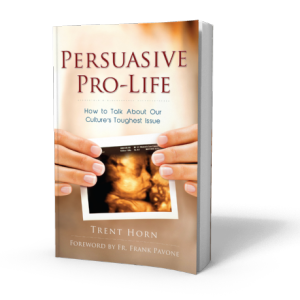 TRENT: Yes, in both cases I find that the other person simply assumes their position is true without actually defending it. For example, atheists will frequently say that if I can’t prove that theism is true then that means atheism is true. But historically atheism is not just a lack of belief in God but the denial of God’s existence, so the failure to prove God exists does not mean one has proven he does not exist. Even if atheism were just a “lack of belief” that would be uninteresting unless it were coupled with a positive claim like “There are no good reasons to think God exists.”
TRENT: Yes, in both cases I find that the other person simply assumes their position is true without actually defending it. For example, atheists will frequently say that if I can’t prove that theism is true then that means atheism is true. But historically atheism is not just a lack of belief in God but the denial of God’s existence, so the failure to prove God exists does not mean one has proven he does not exist. Even if atheism were just a “lack of belief” that would be uninteresting unless it were coupled with a positive claim like “There are no good reasons to think God exists.”
The same happens with pro-choice or pro-abortion advocates. They already assume abortion is a “harmless choice” or “woman’s right” and so they ask questions like, “Shouldn’t we keep abortion legal so that it’s safe?” or “How can you impose your view that life begins at conception onto other people?” They don’t realize that they assume their view is correct and discount the idea that abortion is never safe since at least half the people involved in the procedure die (i.e. the unborn children). Also, pro-choice advocates may chide pro-lifers for imposing the view that human organisms generally begin to exist at conception (a small minority begin at twinning), but they impose the view that humans don’t have rights until birth. Everyone “imposes” the view that life begins at some point, the question is whose position is backed by the evidence? My book argues that it is the pro-life view.
So yes, there are similarities in that one side thinks that if they refute the other then their view automatically wins by default, but there are differences. It’s important to remember that there are some atheists who are pro-life such as members of the group Secular Pro-life and Christians who are pro-choice like the Religious Coalition for Reproductive Choice.
BRANDON: What are some simple tips for discussing the abortion issue charitably and fruitfully?
TRENT: Try to ask more questions instead of making lots of statements. Specifically, questions like “What do you think about abortion?” and “Why do you think that?” Instead of hitting the other person over the head with your opinion you can have a calmer more powerful discussion by asking the right questions that get the person to -re-think the whole issue.
Also, just try to be normal and empathize with people. For example, when the issue of abortion in the case of rape comes up, don’t launch into a speech about how rare the situation is but just acknowledge how terrible such a situation is! My old mentor Steve Wagner used to say, “Before people will believe the unborn are human, they have to believe YOU are human!”
BRANDON: In the book you describe many types of pro-abortion opponents or inquirers. What should we know about each type?
TRENT: In my book I talk about ten different types of pro-choice advocates, not by demographics like age or race, but by the kind of arguments they use to defend their position. All of them can be boiled down to about three types of people:
1. Those who ignore the question of the unborn: These pro-choicers say abortion should be legal because it helps women or is a civil right. They completely sidestep the question of what abortion does to the unborn so you need to charitably get them back to that central issue.
2. Those who say the unborn don’t matter: These pro-choicers say the unborn are not human, not persons, or simply don’t have a right to live in their mother’s bodies. What’s good about these advocates is that they understand that the moral status of the unborn is the central issue in this debate. For them, you’ll need to use science to show that the unborn are living human organisms and philosophy to show them that there are no morally relevant differences between unborn human organisms and born human organisms.
3. Those with tough questions: This last group may implicitly accept that the unborn are fully human but they get bogged down with tough situations like abortion in the case of rape. You’ll need to compassionately explain that even in these tough situations violence against unborn humans is not morally justified.
BRANDON: What do you consider to be the strongest argument for abortion and how would you respond?
TRENT: The strongest argument for abortion grants as many premises to the pro-life advocate as possible. Bodily rights arguments, which grant that unborn children could be human beings with a right-to-life, but deny the unborn have a right to use their mother’s body to live, are the strongest argument for abortion.
However, these arguments either rest on controversial premises that are certainly false (“I can do whatever I want with my body”) or they use analogies that are fatally dis-analogus to pregnancy (being forced to donate an organ to save someone’s life).
I have a whole chapter in my book dedicated to pointing out the flaws in these kinds of arguments for abortion.
BRANDON: If you had thirty seconds with a pro-abortion advocate, what would you say to change their mind?
TRENT: I would ask them to explain to me what’s wrong with the view that all human organisms should have the basic right to live and since the unborn are living human organisms, then why shouldn’t we give them that same basic right to live? Why should we believe that smaller, less developed, and more dependent humans don’t deserve to live?
Hopefully, by showing them that there is no morally relevant difference between born and unborn humans, the person will begin to question the morality of abortion.
Find out more about Trent Horn by visiting his website, TrentHorn.com . And be sure to pick up your copy of his book, Persuasive Pro-Life for only $5:
The post Get the Best Pro-Life Book Today for Just $5 appeared first on Brandon Vogt.





January 6, 2017
Book Giveaway (5 copies): “Eye of the Tiber: The Book“ by S.C. Naoum
“Find out how much God has given you and from it take what you need; the remainder is needed by others.” — St. Augustine
Since I’ve built up a large collection of extra books and resources, every week I give some away absolutely free, no strings attached. Each giveaway lasts seven days with a new one beginning every Friday. You can enter any time during the week. Check out my past giveaways here.
Today I’m giving away FIVE copies of the long-awaited first book by S.C. Naoum, Eye of the Tiber: The Book. Learn more and enter below!
Eye of the Tiber: The Book
by S.C. Naoum
Provings Press, 384 pages, hardcover
 Reporting Catholic news as it happens, when it happens, and before it happens, “Eye of the Tiber” has been delighting readers online since 2012. Now, it provides a book that can be thrown!
Reporting Catholic news as it happens, when it happens, and before it happens, “Eye of the Tiber” has been delighting readers online since 2012. Now, it provides a book that can be thrown!
The only news source brave enough to report stories like Pope Francis’ midnight shift position at McDonalds, or Lila Rose going undercover as a fetus, “Eye of the Tiber” is the hilarious Catholic satire site that leaves no issue untouchable, “breaking Catholic news so you don’t have to”.
S.C. Naoum created “Eye of the Tiber” in 2011 and has gained a loyal and confident following of many different Catholic personalities. In his debut title, Eye of the Tiber: The Book, S.C. brings readers a collection of lesser known Catholic headlines including over 40 new stories and many of his favorites from the past.
I’m using Gleam to help with the giveaway, which is cool because it allows you multiple entries for posting on Facebook, sharing on Twitter, etc. Click below to enter:
(If you’re reading this through email or RSS and don’t see the giveaway widget, click here.)
By entering this giveaway you agree to occasionally receive email updates from me—no spam, just updates about free books, cool links, and exciting news.
The winner(s) will be randomly selected next Friday and the books will be sent out, free of charge, shortly thereafter.
(Since I’m covering the shipping costs, only residents within the continental United States are eligible to win.)
The post Book Giveaway (5 copies): “Eye of the Tiber: The Book“ by S.C. Naoum appeared first on Brandon Vogt.





December 26, 2016
How to Easily Read the Whole Bible in 2017
As you prepare for the new year, why not commit to reading the entire Bible in 2017? It’s not as hard as you might think.
The Bible contains around 775,000 words. The average adult reads 250 words per minute. That means if you read the Bible for just 10 minutes per day, you’ll get through the whole thing in a year!
Everyone can find 10 minutes in their day, whether early in the morning, during a lunch break, or before going to bed.
But after committing to reading the whole Bible, most people have two questions: which translation should I use, and how should I do it?
Which Translation to Use?
There are a few things to keep in mind with translations. First, make sure your Bible is complete. Protestant translations such as the New International Version (NIV), the English Standard Version (ESV), and the King James Version (KJV) do not contain the seven deuterocanonical books that the Catholic Church accepts as Sacred Scripture. You’re going to want those books in your Bible (they’re really good!) so get a Catholic Church-approved translation.
Second, you want to make sure your Bible translation strikes a good balance between precision and readability. Avoid paraphrase translations, such as The Message. Instead, go with a more literal (i.e., “word for word”) translation that is still easy to read. Here are my personal recommendations, in order of preference. All of them have been officially approved by the Catholic Church for personal study:
Revised Standard Version – 2nd Catholic Edition (RSV-2CE) – This is the one I use, and it’s hailed by most Catholic Bible scholars I know. It offers a literal but still very readable translation.
New American Bible – Revised Edition (NAB-RE) – This is the translation used during the Mass, although it does contain some questionably translated passages and some dubious footnotes. But if you want to sync your reading to the liturgy, this is your best choice.
New Revised Standard Version (NRSV) – Solid translation although it contains “gender inclusive language”, changing “brothers” to either “friends” or “brothers and sisters” and removing instances of the divine “He”.
Douay-Rheims Version (DR) – This was the standard Bible for English-speaking Catholics from 1609 until the twentieth century. It’s a trusted version but some readers find it a bit turgid, similar to the King James Version.
You might also check out study Bibles that are specifically designed for a one-year reading plan. For instance, there’s the My Daily Catholic Bible (NAB) which divides all of Scripture into 365 segments, one for each day of the year. It features two small readings for each day, one from the Old Testament and one from the New Testament, along with an insightful quote from a saint. The best part is that the readings are all grouped together sequentially so you don’t have to flip back and forth each day between the Old and New Testaments.
There’s also the Catholic One Year Bible which uses the Catholic Living Bible translation, a less-then-literal translation but one that many readers find breezier and more accessible.
In the end, what matters most is that you find a translation you’ll actually read. If you pick one that is cumbersome or inaccessible, then it doesn’t really matter whether it’s accurate. Your best bet is to sample a few translations online and then choose one you feel most comfortable reading each day.
What’s the Best Plan?
Similar to the translation question, the answer here is whichever plan you’ll follow. Unfortunately, many people figure they’ll just start with Genesis and plow right on through to Revelation. That’s a bad idea. As anyone who has tried this knows, some of the early Old Testament books are meticulous, such as Leviticus and Numbers, and most people get bogged down, wiping out before finishing even half the Old Testament.
What’s a better strategy? Follow a carefully designed reading plan that will serve you the right parts of Scripture, at the right pace and the right time. Some of these plans alternate between Old and New Testament readings, while some also intersperse the Psalms throughout the year to add variation.
Here are some of my favorite Bible reading plans for Catholics. Choose your Bible translation, then choose a plan, and you’ll be ready to make 2017 the year you finally finish the whole Bible:
Read the Bible and the Catechism in a Year – This plan, created by the Coming Home Network, is perhaps my favorite. Not only does it take you through the whole Bible (the Catholic Bible, including the deuterocanonical books), but it also gets you through the entire Catechism of the Catholic Church. Each day you read about three chapters of Scripture and fifteen paragraphs of the Catechism. It will take about 30 minutes each day, but then at the end of the year, you will have finished the Bible and the Catechism—you’ll know more about your faith than 99% of fellow Catholics. (Note: To get the PDF of this plan, you have to create a free account on the CHNetwork’s website, but it’s definitely worth it.)
Dr. Mary Healy’s Read the Bible in a Year Plan – This plan was created by Dr. Mary Healy, a premier Catholic biblical scholar, and it’s great because it has you reading excerpts from the Old Testament, Psalms, and New Testament each day. That means when you get to the difficult Old Testament sections, you’ll still have the Psalms and New Testament to balance you out.
CatholicBibleInAYear.org Reading Plan – This one is similar to Dr. Healy’s plan except it offers even more variety each day. You’ll read two Old Testament readings, one New Testament reading, and one psalm each day.
Pierced Hands Reading Plan – My friend Meg Hunter-Kilmer created this plan. As Meg explains, “This one still gets you through the whole Bible in a year (and the Gospels twice), but it goes chronologically through the Old Testament (more or less) with New Testament books and fun books like Ruth and Jonah interspersed throughout to mix things up. It also gives you a chapter of some poetic stuff every day instead of dragging you through Proverbs for 200+ days. This schedule is more user-friendly, more reasonable for those who haven’t read the Bible before, and can start any day of the year.” (Meg also has a really cool Bible timeline PDF that she recommends you print and keep tucked in your Bible.)
My Personal Solution
I mentioned above that I prefer the Revised Standard Version – 2nd Catholic Edition (RSV-2CE) for Scripture study. But I also have a secret weapon: the Verbum Bible software.
I’ve written before about how amazing this is, calling it the most powerful Bible resource ever available. But Verbum also makes it super easy to read the Bible in a year. It does so with a built-in reading plan, right out of the box:
The best part about using Verbum is that the reading plan syncs across all of your devices. So you can read the daily Bible passages on your computer, tablet, phone, or any other mobile device. It’s great for people like me who are constantly on the go and often forget to carry around a print version of the Bible. (Verbum also syncs your highlights and notes across all devices, so the reading experience is seamless.)
To be up front, though, the Verbum library packages can be pretty expensive—the cheapest base package is $265.
But if you’re just interested in reading the Bible, the Catechism, and basic Church documents, check out the Verbum Catechism of the Catholic Church Collection. It’s only $50 and gives you lifetime access to the powerful Verbum software along with the Revised Standard Version – Catholic Edition (RSV-CE) of the Bible, the Catechism of the Catholic Church, the lectionary (the readings used at Mass), the documents of Vatican II and the Council of Trent, and a few other resources. All of those documents can be accessed on the go, on any device you’re using. In my opinion, the cost of this collection ($50) is more than worth it if it enables you to finish the Bible in a year.
(I should note that the Catechism of the Catholic Church Collection does not come with all the features of the Verbum software. It lets you read the Catechism and Bible, create reading plans, notes, highlights, and a few other things. But if you want the complete set of powerful tools in Verbum, check out one of their library packages. With those you get the full power of the software along with tons of additional books, which really showcase the power of Verbum. I personally use Verbum Master and love tools like Clause Search and Bible Facts. If you use the code BVOGT at checkout, you’ll get 10% off any Verbum library—just not the Catechism collection.
Also, full disclosure, I get a small commission if you purchase one of the Verbum libraries, but nothing if you purchase the Catechism collection. Nevertheless, I still promote the Catechism collection because I think it’s a fantastic deal and the best way to get started with Verbum.)
So those are my tips and advice. Now a question:
Are you going to read the whole Bible in 2017?
Let us know in the comment box!
The post How to Easily Read the Whole Bible in 2017 appeared first on Brandon Vogt.





December 21, 2016
New Stats on Why Young People Leave the Church
In my book, RETURN: How to Draw Your Child Back to the Church, I pour through all the data about why young people leave the Church, where they go, and what they believe. Most of the analysis stemmed from surveys conducted by the Pew Research Center, CARA, the Barna Group, and Dr. Christian Smith’s team at Notre Dame.
However, a new survey was just released by PRRI entitled “Exodus: Why Americans are Leaving Religion—and Why They’re Unlikely to Come Back”. The survey was conducted in August 2016, in partnership with Religion News Service (RNS), and involved a random sample of 2,201 adults in the United States. It’s not as comprehensive as Pew’s regular national religious landscape surveys, which sample more than 30,000 Americans, but it’s still helpful in many ways.
If nothing else, it reinforces the same dire picture as previous studies: young people are leaving religion in droves and the so-called “nones” are on the rise (these are people who don’t identify with any specific religion.) The PRRI study also affirms that young Catholics are leaving their faith at rates higher than almost any other religious group.
Below, I’ve pulled together key insights from the new PRRI study alongside data from the previous reports. I encourage all Catholics to study these numbers—especially if you’re a parent, priest, or Church leader.
Reflect on these stats. Paint a picture in your mind. If your goal is to help slow the surge of people fleeing the Church, and to help draw back those who have already left, it’s crucial to know as much as we can about them.
WHO are the Former Catholics and the “Nones”?
10% of American adults are now former Catholics
When Catholics leave the Church, they become:
49% – “None” (aka “unaffiliated” or “no religion”)
25% – Evangelical Protestant
13% – Mainline Protestant
13% – Other (Mormon, Jehovah’s Witnesses, Jewish, Muslim)
25% of Americans identify today as “none” (i.e., no religion)
Highest percentage ever recorded: hovered from 4-6% (1970s-1980s), then rose during 90s to 14% (1999), 20% (2012), and today it’s surged to 25% (2016).
Now the single largest religious group in America
Interestingly, 21% of “nones” were raised unaffiliated while 28% were raised Catholic
39% of young adults (18-29) are “none” (more than 3x the rate of “none” seniors aged 65+)
Today’s young adults are 4x more likely to be “none” than young adults in the previous generation
Young Adults today
39% = “none”
15% = Catholic
9% = white Evangelical Protestant
8% = white mainline Protestant
7% = black Protestant
11% = other non-white Protestant
7% = non-Christian religion
Large majority (64%) of today’s young adult “nones” were raised religious, but then left it
Three types of “Nones”
Rejectionists (58%) – Religion is not personally important, and it does more harm than good
Apatheists (22%) – Religion is not personally important, but it’s generally helpful to society
Unattached Believers (18%) – Religion is personally important, and it’s generally helpful to society
WHEN are They Leaving?
79% of former Catholics leave the Church before age 23 (Pew)
50% of Millennials raised Catholic no longer identify as Catholic today (i.e., half of the babies you’ve seen baptized in the last 30 years, half of the kids you’ve seen confirmed, half of the Catholic young people you’ve seen get married)
Only 7% of Millennials raised Catholic still actively practice their faith today (weekly Mass, pray a few times each week, say their faith is “extremely” or “very” important)
50% of Millennials raised Catholic no longer identify as Catholic today (half of baptized babies, half of confirmandi, half of young married people, etc.)
90% of American “nones” who left religion did so before age 29 (PRRI)
62% leave before 18
28% leave from 18-29
5% leave from 30-49
5% leave from 50+
WHY are They Leaving?
PRRI Survey (2016) – percentage of “nones” who said reason(s) below was an important reason they left religion
60% – I stopped believing in the religion’s teachings
32% – My family was never that religious growing up
29% – Negative religious teachings about or treatment of gay and lesbian people
40% for women, 20% for men
39% for Millennials, 12% for seniors
39% raised Catholic, 29% raised anything else
19% – Clergy sex-abuse scandal
Interestingly, this was 26% for women and 13% for men
18% – Traumatic event in my life
16% – My church or congregation became too focused on politics.
Pew Survey – “Faith in Flux” (2009) – percentage of former Catholics who said reason(s) below played a role in their departure
71% – Just gradually drifted away from the religion
65% – Stopped believing in the religion’s teachings
43% – Spiritual needs not being met
29% – Unhappy with teachings about the Bible
26% – Dissatisfaction with atmosphere at worship services
18% – Dissatisfaction with clergy at congregation
10% – Found a religion they liked more
Diocese of Springfield Exit Surveys (2014) – percentage of former Catholics who said reason(s) below played a role in their departure
68% – Spiritual needs not met
67% – Lost interest over time
56% – Too many money requests
48% – No longer believe
47% – Dissatisfaction with atmosphere
38% – Too ritualistic
36% – Too formal
36% – Music not enjoyable
Other Stats
66% of “nones” agree that “religion causes more problems than it solves”
60% of “nones” believe in God, either as a person with whom they can have a relationship (theism, 22%) or an impersonal force (deism, 37%)
If you want a more detailed picture about why young people leave the Church and, more importantly, how to draw them back, click below to get your copy of my bestselling book, RETURN .
The post New Stats on Why Young People Leave the Church appeared first on Brandon Vogt.





December 12, 2016
Learning from a Courageous Woman who Endured Doubt

Today we continue our regular series called “Learning from the Saints.” Our guide is expert Bert Ghezzi, a dear friend of mine and the author of numerous books including Voices of the Saints, Saints at Heart, and Discover Christ: Developing a Personal Relationship with Jesus.
His more recent books are The Power of Daily Mass and The Heart of Catholicism. You can learn more about Bert and his work at BertGhezzi.com.
Today, Bert profiles St. Jane Frances de Chantal, who is the patron of of forgotten people, in-law problems, and the loss of parents.
Any Christian who has ever been of two minds should take St. Jane Frances de Chantal as a model. If we are being candid, perhaps thus all of us should regard her as our patron. Jane de Chantal served God generously her entire life. All the while, however, a worm of doubt gnawed at her soul. In her sunset years she told a friend,
“I’ve had these temptations for forty-one years now—do you think I’m going to give up after all this time? Absolutely not. I’ll never stop hoping in God, though he kill me, though he grind me into the dust of eternity.
“Most often, there is a confused sort of strife in my soul. Between feelings of being plunged into impenetrable darkness that I am powerless to do anything about, I have a kind of spiritual nausea that tempts me to give up trying. When these trials are at their most severe, they hardly let up at all, and they cause me unimaginable torment, so that I would almost be willing to do anything to be relieved of this torture. On the one hand, I am caught between the excruciating pain, and on the other hand, my love for our holy Faith that is so deep I would die rather than deny the least article of it.
“If I can keep from offending God in spite of all this, then I am content with whatever it may please him to allow me to suffer, even if I must suffer for the rest of my life. I want only to do it knowing that he wants me to, and that in suffering I am being faithful to him.”
Spiritually, St. Jane de Chantal seems lifelong to have endured a dark night of the soul. Medically, physicians today might say she appears to have been clinically depressed. Whatever her condition, however, nothing stopped this most competent woman from sailing through her days.
 Jane Frances Frémyot doted on her husband, Baron Christopher de Chantal, whom she married in 1592. She bore him seven children, four of whom survived. Jane’s long sadness began in 1601 when the baron died in a hunting accident. To better serve Christ as a widow, the saint took a private vow of celibacy.
Jane Frances Frémyot doted on her husband, Baron Christopher de Chantal, whom she married in 1592. She bore him seven children, four of whom survived. Jane’s long sadness began in 1601 when the baron died in a hunting accident. To better serve Christ as a widow, the saint took a private vow of celibacy.
Three years later Jane met St. Francis de Sales. She identified him as the bishop pictured in a vision as her future spiritual director. The saints became friends, and Francis took responsibility to guide Jane’s life. She thought of becoming a Carmelite nun, but Francis suggested that she collaborate with him in founding a new religious community for women. In 1610, after ensuring care for her children, she founded the Congregation of the Visitation and became Mother de Chantal.
St. Francis designed the community women who could not endure the rigors of other religious orders. When Mother de Chantal was criticized for accepting so many ill candidates, she replied, “What do you want me to do? I like sick people, myself.” The order spread rapidly. When St. Jane de Chantal died in 1641, there were 87 Visitation monasteries.
“O Lord Jesus, I surrender to you all my will. Let me be your lute. Touch any string you please. Always and forever let me make music in perfect harmony with your own. Yes, Lord, with no ifs, ands or buts, let your will be done in this family, for the father, for the children, for everything that concerns us, and especially let your will be done in me.”
— Prayer of St. Jane de Chantal
Read more from Bert at his website www.BertGhezzi.com, or check out his many books on Amazon.
The post Learning from a Courageous Woman who Endured Doubt appeared first on Brandon Vogt.





Brandon Vogt's Blog
- Brandon Vogt's profile
- 75 followers


